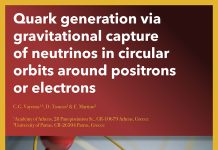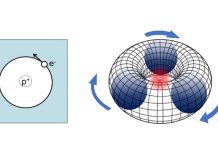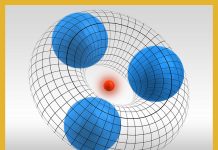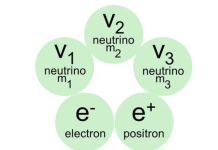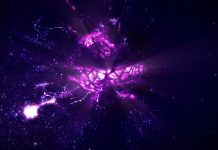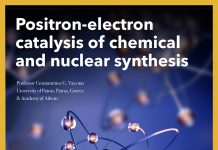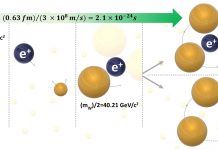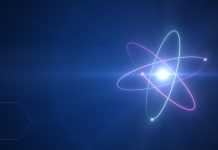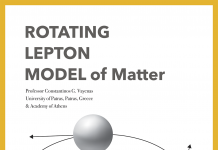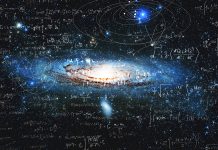Open Access Government produces compelling and informative news, publications, eBooks, and academic research articles for the public and private sector looking at health, diseases & conditions, workplace, research & innovation, digital transformation, government policy, environment, agriculture, energy, transport and more.
Home 2025
Archives
Quark generation via gravitational capture of neutrinos in circular orbits around positrons or electrons
We consider the circular motion of a neutrino of rest mass mν rotating around an electron or positron due to their gravitational attraction, and we use Special Relativity (SR) to compute the gravitational (or inertial) mass γ3mν of the neutrino. The computed mass is found to be, surprisingly, in the Planck mass range (~1019 GeV/c2), and the corresponding gravitational force between any two of them reaches the Strong Force value (104-105 N) at fm distances.
Positron and electron catalysis of neutrino hadronization: How our universe was made: Part III
Constantinos G. Vayenas1, Dionysios Tsousis1,2 and Eftychia Martino1 examine positron and electron catalysis of neutrino hadronization, as they continue to explore how our Universe was made.
Positron and electron catalysis of neutrino hadronization: How our universe was made. Part II
Constantinos G. Vayenas, Dionysios Tsousis and Eftychia Martino discuss advancements in understanding particle physics through the development of the Rotating Lepton Model (RLM).
Department of Chemical Engineering at the University of Patras
Developing chemical engineers educated in research, development and optimisation of production of industrial products and materials.
The role of neutrinos, quantum mechanics and special relativity in baryogenesis
Constantinos G. Vayenas from the University of Patras and the Academy of Athens, explores the roles of neutrinos, quantum mechanics, and special relativity in baryogenesis.
Positron and electron catalysis of neutrino hadronization: How our universe was made
Constantinos G. Vayenas1, Dionysios Tsousis1,2 and Eftychia Martino1, together, discuss how our Universe was made, focusing on positron and electron catalysis of neutrino hadronization.
The role of neutrinos and Special Relativity in Baryogenesis
It is well known that systems comprising two or more rotating particles or bodies play an important role not only in Astronomy and Chemistry, but also on Nuclear Physics. In Chemistry such systems are known as the Bohr model, whereas in particle physics they are known as the Rotating Lepton Model.
How positron and electron reactions shape the universe we live in
Constantinos G. Vayenas from the University of Patras, Academy of Athens explores how positron and electron catalysis of neutrino hadronization has created the mass of our universe.
Neutrinos, light, matter, and the unification of gravitational and nuclear forces
The discovery of neutrinos and the measurement of their masses are significant events in the history of science. The Rotating Lepton Model provides a useful basis for understanding particles and nuclear reactions, highlighting the importance of Special Relativity, Gravity, and Quantum Mechanics in our universe. Professor Constantinos G. Vayenas explains.
Positron-electron catalysis of chemical and nuclear synthesis
The topics discussed here by Marc Lemaître, Director-General for Research and Innovation of the European Commission, are empowering research careers and reinforcing the European Research Area.
Thermodynamics of hadronization: The rotating lepton model explains key CERN experiments
Constantinos G. Vayenas, Professor at the University of Patras, Academy of Athens, explores the thermodynamics of hadronization, using the Rotating Lepton Model and two key CERN experiments.
Neutrino production in proton-proton collisions supports the rotating lepton model
Direct observation of neutrino production in proton-proton (pp) collisions at CERN LHC lend strong support to the Rotating Lepton Model, Constantinos G. Vayenas(1), Dionysios Tsousis(1,2) and Eftyhia Martino1 ((1)University of Patras, (2)Stanford University) tell us.
The rotating lepton model: Electron and positron catalysis of chemical and nuclear synthesis
Professor Emeritus Constantinos Vayenas from the University of Patras and PhD student Dionysios Tsousis from Stanford University discuss electron and positron catalysis in the CERN e+e- annihilation experiments via the Rotating Lepton Model.
Rotating Lepton Model of Matter: European innovation potential
Mariya Gabriel, European Commissioner for Innovation, Research, Culture, Education and Youth, calls attention to building a pan-European innovation potential ecosystem in health served with top-notch infrastructures.
The Standard Model (SM) and the goal of force unification
The unification of gravitational, Strong and Weak Forces has been a long-sought goal [1-3]. In general, force unification refers to the idea that it is possible to view all of the forces of nature as manifestations of one single, all-encompassing force.
Rotating Lepton Model: Coupling relativity, quantum mechanics and neutrinos for the synthesis of matter
Professor Costas Vayenas and his coworkers Dionysios Tsousis and Dimitrios Grigoriou, discuss how using special relativity to study neutrino motion at fm distances leads to Bohr type models with relativistic gravity as the attractive force.

